Last-Minute NYC Holiday Gift Guide 🎁
We’ve created a holiday gift guide with presents for the intrepid New Yorker that should arrive just in time—



The coastal region of Northeastern Catalonia in Spain, stretching from Blanes outside of Barcelona to the French border, is known as the Costa Brava (rugged Coast) for its wild rock formations and rough landscape. Due to the combination of an excellent summer climate, overwhelming nature and first class beaches, the region has been largely exploited for tourism, which took over from fishing as the principal business, especially in classic seaside resorts such as Blanes, Tossa de Mar and Lloret de Mar.
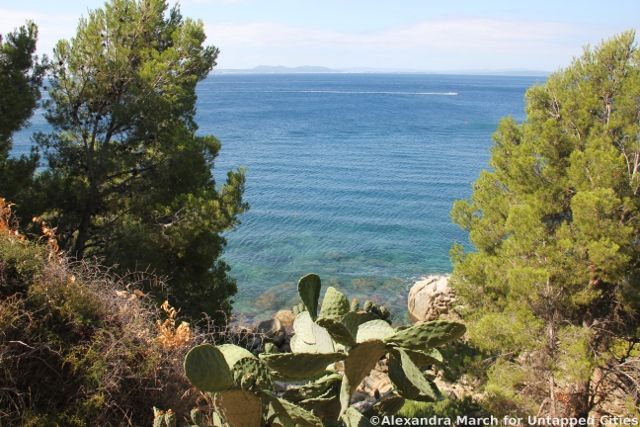 Costa Brava, the rugged coast.
Costa Brava, the rugged coast.
One of the places that (for now) are able to hold the balance between attracting (international) travelers and preserving their original beauty and native charm is the town of Cadaqués. Roughly 80 kilometers from Girona and 170 from Barcelona, Cadaqués is a day-trip destination and experiences a manifold population increase during the peak of the summer season. However, since over land it’s only accessible via a winding road and the terrain is hilly and difficult, development is kept largely at bay so that the town maintains a low population off-season while still being able to accommodate a reasonable number of visitors.
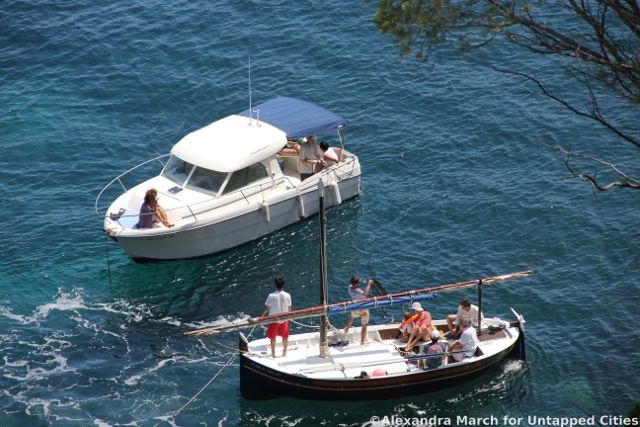 Spying on people’s boats from above.
Spying on people’s boats from above.
Because of the geography, people traditionally rowed and sailed from town to town, or simply walked. Traveling like the locals is the ideal way to experience the beauty of the area, and if you string all the trails connecting the seaside towns together, you end up with one long walk: the Camino Ronda. The “round way” (also: Costa Brava Way, GR-92 – Grand Rondonee) is a trail running all along the Costa Brava from Collioure near France to Blanes. It’s quite extensive (around 220km), well-marked, and runs mainly along the coast, taking you through fishing villages to coves and small beaches which are far from crowded. Going on foot will let you stray away from the coast as you like and enable you to see inland sights as well.
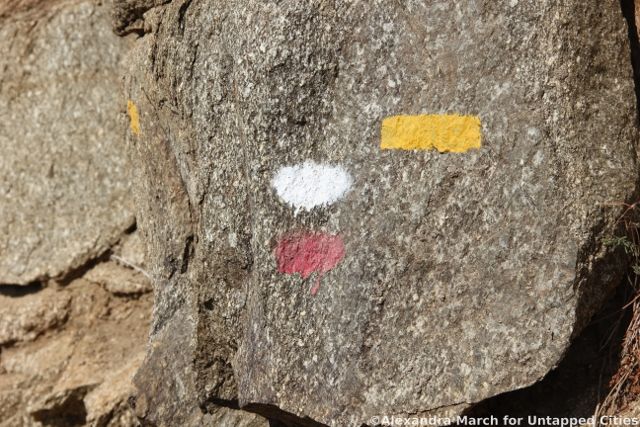 Ample trail markers on the Camino Ronda along the Costa Brava.
Ample trail markers on the Camino Ronda along the Costa Brava.
We settled for a small stretch of the Camino Ronda, from Roses to Cadaqués. At around 21 kilometers, it’s a one-way hike of moderate strenuity (with the possibility of taking a bus back). There are several bays and beaches along the way where you can cool off with a pleasant swim in the Mediterranean Sea, but ample sun protection is advisable.
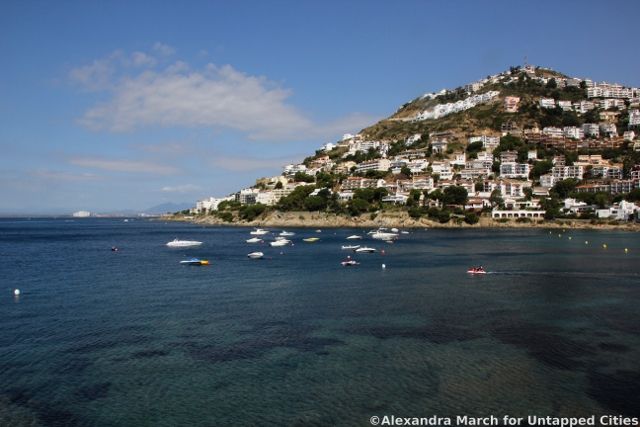 Looking back at the town of Roses.
Looking back at the town of Roses.
Coming from Roses, about one third into the hike, you will come to the bay of Cala Montjoi. Overlooking the beach sits 3 Michelin star restaurant elBulli, declared the world’s most controversial and experimental restaurant. Restaurant Magazine judged it to be Number One on its Top 50 list of the world’s best restaurants for a record of five times, but alas, elBulli closed its doors to the public in 2011. Inconspicuous looking from the outside, getting in was a matter of first-come, first-serve. Bookings for next year’s limited season were taken on a single day after the current season closed. Despite over a million requests, the restaurant only served around 8,000 diners per season that way.
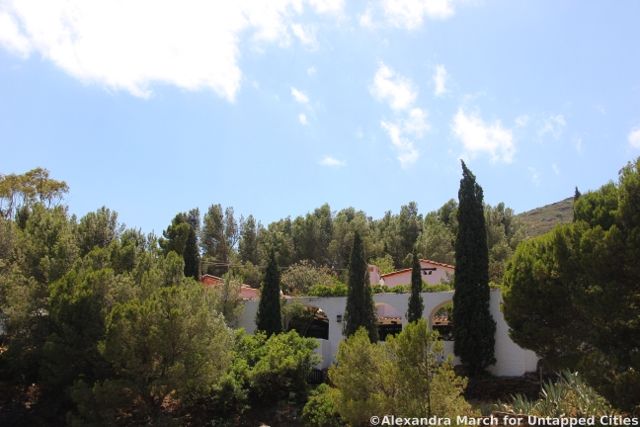 Almost hidden: elBulli restaurant, now closed.
Almost hidden: elBulli restaurant, now closed.
Though the restaurant had been operating at a loss in its last decade (with profit coming from book sales and lectures), chef Ferran Adrià stated elBulli had completed its journey as a restaurant and that he wanted to free up the creativity of the people involved for other projects. Adrià, who has been called “the father of molecular gastronomy” and was in sole charge of the kitchen since 1987, has transformed the restaurant into elBullifoundation, which is scheduled to open as a creativity center in 2014. The Creative Universe of Ferran Adrià is an exhibition at the Palau Robert in Barcelona (which will travel to New York and London in 2013) and outlines the 50 years of the restaurant’s history and explains the keys of elBullifoundation as well as the future of the Centre-Museum in Roses.
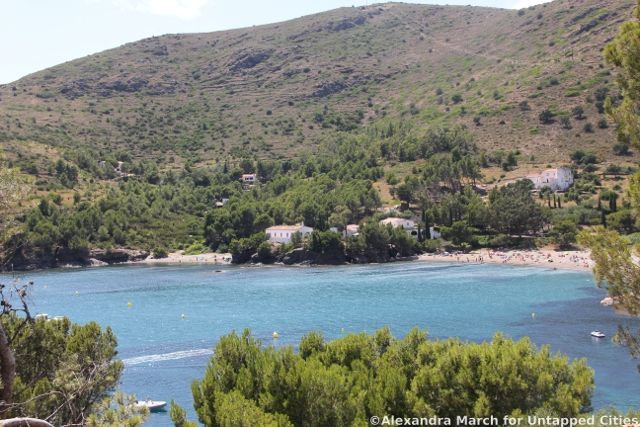 Looking back at Cala Montjoi and elBulli restaurant.
Looking back at Cala Montjoi and elBulli restaurant.
Although Costa Brava seems the naturally most fitting name for this rugged stretch of coast, other names have been suggested, among them Costa Grega (Greek Coast), and indeed, some of the bays and views you’ll encounter on this hike might trick you into thinking you’re elsewhere in Europe.
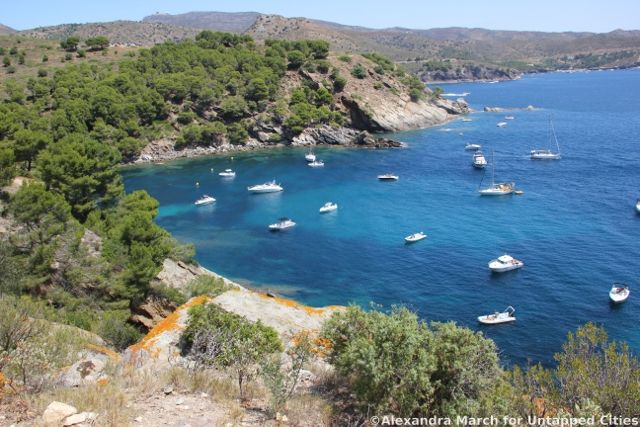 Feels and looks like Greece: Costa Grega.
Feels and looks like Greece: Costa Grega.
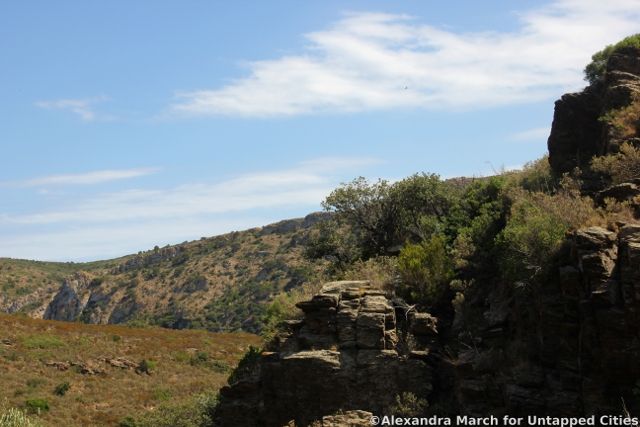 A little inland stretch on the hike.
A little inland stretch on the hike.
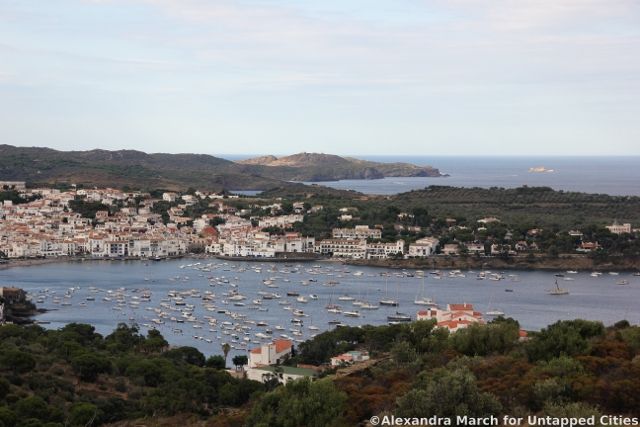 Cadaqués with Cap de Creus in the distance.
Cadaqués with Cap de Creus in the distance.
Approaching Cadaqués you’ll come through Portlligat, where surrealist painter Salvador Dalí spent summers in his youth and later created a house out of a fisherman’s hut over the course of forty years. In a biological approach, each new pulse in the life of Dalí and his wife grew into a new room, like the cell of a being. Every window frames a view of Portlligat Bay, a fixture of reference in Dalí’s work.
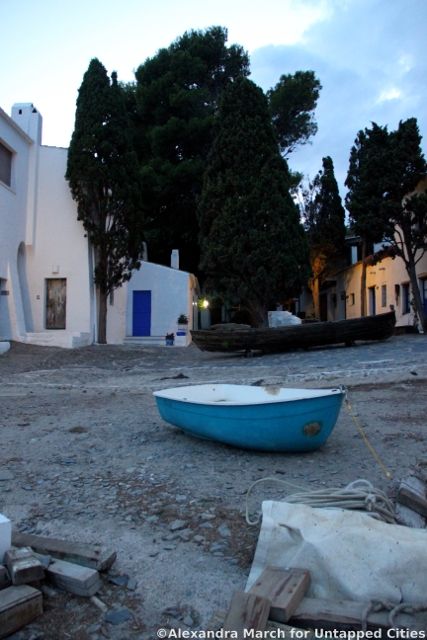 Salvador Dalí house museum in Portlligat.
Salvador Dalí house museum in Portlligat.
Cadaqués itself has a long history of painters: the Cadaqués museum displays charcoal sketches by local artist Mei Fren, the first modern artist to live in the town and followed by many notable others, among them Pablo Picasso, Joan Miró and Marcel Duchamp. Other sights in town are the 17th century Church of St. Mary, a traveling market on Mondays, and a quirky replica of the Statue of Liberty with two upraised torches instead of just one.
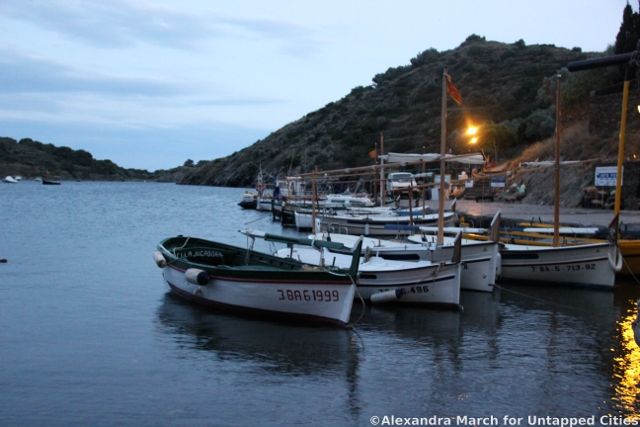 Portlligat bay at dusk.
Portlligat bay at dusk.
Within easy reach of Cadaqués is the easternmost point of the Iberian Peninsula, Cap de Creus, a natural park and extraordinary landscape of dry, wind-beaten rock with nearly no trees.
Coming back from a day’s hike, Cadaqués is a great place for eating out with a good selection of family operated restaurants to sample Mediterranean cuisine, fresh seafood and Catalan white wine or sparkling water.
All photographs courtesy of Alexandra March.
Get in touch with the author @flachrattenmann.
Subscribe to our newsletter